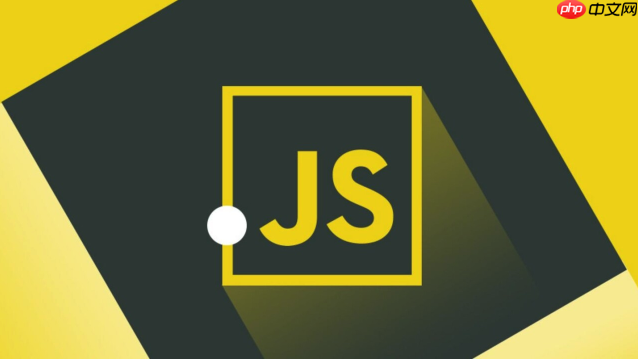答案:实现折叠面板需结合HTML语义化结构、CSS过渡动画与JavaScript交互控制。应使用button作为触发器并配合aria-expanded、aria-controls等属性提升可访问性,通过max-height与overflow:hidden实现平滑动画,利用scrollHeight动态适配内容高度,并在手风琴模式中遍历其他面板确保单开状态,同时注意异步内容加载后的高度重计算与事件委托优化性能。

实现折叠面板,核心在于通过JavaScript控制元素的显示与隐藏状态,并配合CSS实现平滑的过渡动画。这通常涉及到一个触发元素(比如按钮或标题)和一个可折叠的内容区域。当触发元素被点击时,JavaScript会改变内容区域的某个CSS属性(例如
max-height
display
实现折叠面板,我个人倾向于一种兼顾简洁与灵活性的做法,通常是利用HTML结构、CSS样式和JavaScript事件监听的组合。
一个基本的折叠面板,你需要一个能点击的“开关”和一个需要被“藏起来”的内容区域。
HTML 结构
通常,我会这样构建HTML:
<div class="accordion-item">
<button class="accordion-header" aria-expanded="false" aria-controls="panel1">
折叠面板标题 1
</button>
<div id="panel1" class="accordion-content" role="region" aria-labelledby="header1">
<p>这是折叠面板的内容。它可以包含任何HTML元素,比如文本、图片或者其他组件。</p>
</div>
</div>
<div class="accordion-item">
<button class="accordion-header" aria-expanded="false" aria-controls="panel2">
折叠面板标题 2
</button>
<div id="panel2" class="accordion-content" role="region" aria-labelledby="header2">
<p>第二块内容,可能更长一些,所以`max-height`的设置需要考虑到这一点。</p>
</div>
</div>这里我用了一个
button
aria-expanded
aria-controls
CSS 样式
CSS是实现动画和初始隐藏的关键:
.accordion-content {
max-height: 0; /* 初始隐藏 */
overflow: hidden; /* 隐藏溢出内容 */
transition: max-height 0.3s ease-out, padding 0.3s ease-out; /* 平滑过渡动画 */
padding: 0 15px; /* 初始无内边距 */
}
/* 当内容展开时 */
.accordion-content.active {
max-height: 500px; /* 足够大的值,确保内容能完全显示 */
padding: 15px; /* 展开时添加内边距 */
}
/* 头部样式,可选 */
.accordion-header {
width: 100%;
text-align: left;
padding: 15px;
background-color: #f0f0f0;
border: none;
cursor: pointer;
font-size: 1em;
border-bottom: 1px solid #ccc;
}
.accordion-header:hover {
background-color: #e0e0e0;
}这里我特别喜欢用
max-height: 0
max-height: [一个足够大的值]
transition
display: none/block
overflow: hidden
JavaScript 逻辑
JavaScript负责处理点击事件,并切换
active
document.addEventListener('DOMContentLoaded', () => {
const headers = document.querySelectorAll('.accordion-header');
headers.forEach(header => {
header.addEventListener('click', () => {
const content = header.nextElementSibling; // 获取紧邻的兄弟元素,即内容区
// 切换aria-expanded属性
const isExpanded = header.getAttribute('aria-expanded') === 'true';
header.setAttribute('aria-expanded', !isExpanded);
// 切换内容区的active类
content.classList.toggle('active');
// 动态设置max-height以适应内容
// 这是一个小技巧:如果内容区是展开的,max-height设为scrollHeight
// 否则设为0。这样可以避免max-height设死值导致内容被截断。
if (content.classList.contains('active')) {
content.style.maxHeight = content.scrollHeight + 'px';
} else {
content.style.maxHeight = '0';
}
});
});
});我在这里加了一个
content.scrollHeight
max-height: 500px
scrollHeight
设计折叠面板的HTML结构,我的经验是,语义化和可访问性是两个核心考量。一个好的结构不仅让JS更容易操作,也能让使用辅助技术(如屏幕阅读器)的用户更好地理解和操作。
我会倾向于将每个折叠项视为一个独立的单元,通常用一个父容器(比如
div.accordion-item
触发器(Trigger Element)
最推荐的是使用
<button>
<button>
如果使用
div
span
tabindex="0"
为了可访问性,
button
aria-expanded="true/false"
aria-controls="[id of content panel]"
id
内容区域(Content Panel)
内容区域通常是一个
<div>
同样,为了可访问性,
div
id="[unique ID]"
aria-controls
role="region"
role="region"
aria-labelledby="[id of header button]"
所以,一个理想的结构看起来就像我前面给出的示例,
button
div
id
aria-controls
aria-labelledby
实现手风琴效果,也就是每次只能有一个折叠面板展开,是折叠面板的一种常见变体。核心思路是:当用户点击某个面板的标题时,除了展开被点击的面板,还需要把所有其他已经展开的面板都收起来。
我通常会这样处理:
让我们看看具体的JavaScript代码实现:
document.addEventListener('DOMContentLoaded', () => {
const accordionItems = document.querySelectorAll('.accordion-item'); // 获取所有折叠项
accordionItems.forEach(item => {
const header = item.querySelector('.accordion-header');
const content = item.querySelector('.accordion-content');
header.addEventListener('click', () => {
const isCurrentlyExpanded = header.getAttribute('aria-expanded') === 'true';
// 遍历所有折叠项,收起所有当前展开的面板
accordionItems.forEach(otherItem => {
const otherHeader = otherItem.querySelector('.accordion-header');
const otherContent = otherItem.querySelector('.accordion-content');
if (otherHeader !== header && otherHeader.getAttribute('aria-expanded') === 'true') {
otherHeader.setAttribute('aria-expanded', 'false');
otherContent.classList.remove('active');
otherContent.style.maxHeight = '0'; // 确保收起
}
});
// 切换当前点击的面板的状态
header.setAttribute('aria-expanded', !isCurrentlyExpanded);
content.classList.toggle('active');
// 动态设置max-height
if (content.classList.contains('active')) {
content.style.maxHeight = content.scrollHeight + 'px';
} else {
content.style.maxHeight = '0';
}
});
});
});这段代码的关键在于内层的
accordionItems.forEach(otherItem => { ... })if (otherHeader !== header && otherHeader.getAttribute('aria-expanded') === 'true')这里需要注意一个细节:当收起面板时,我们不仅移除了
active
maxHeight
0
scrollHeight
0
这种手风琴效果在FAQ页面、产品详情页等场景非常常见,它能有效管理页面空间,让用户聚焦于当前感兴趣的内容。
在实际项目中实现折叠面板,虽然基本原理简单,但总会遇到一些让人头疼的小问题。我总结了一些常见的挑战和我的解决思路:
max-height
max-height
500px
element.scrollHeight
max-height
content.scrollHeight + 'px'
scrollHeight
overflow:hidden
0
CSS过渡动画不生效或生硬:
display: none
display: block
height: auto
display: none/block
height: auto
auto
max-height
scrollHeight
overflow: hidden
max-height: 0
transition
max-height
padding
内容动态加载或异步更新后的高度问题:
scrollHeight
scrollHeight
success
load
content.style.maxHeight = content.scrollHeight + 'px'
MutationObserver
max-height
多个面板同时展开时的性能问题(尤其在移动端):
header
event.target
header
可访问性(Accessibility)被忽略:
aria-expanded
aria-controls
aria-labelledby
role
调试这些问题时,我经常会用到浏览器开发者的“元素”面板和“控制台”。检查元素的
max-height
overflow
transition
scrollHeight
以上就是JS如何实现折叠面板的详细内容,更多请关注php中文网其它相关文章!

每个人都需要一台速度更快、更稳定的 PC。随着时间的推移,垃圾文件、旧注册表数据和不必要的后台进程会占用资源并降低性能。幸运的是,许多工具可以让 Windows 保持平稳运行。

Copyright 2014-2025 https://www.php.cn/ All Rights Reserved | php.cn | 湘ICP备2023035733号